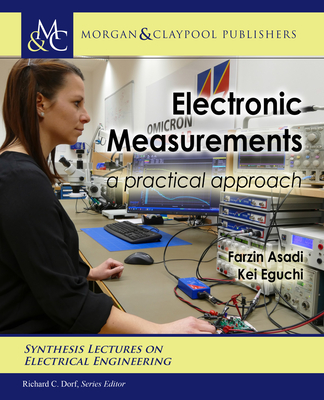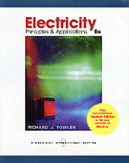Electronic Measurements: A Practical Approach
暫譯: 電子測量:實用方法
Asadi, Farzin, Eguchi, Kei
- 出版商: Morgan & Claypool
- 出版日期: 2021-02-24
- 售價: $2,890
- 貴賓價: 9.5 折 $2,746
- 語言: 英文
- 頁數: 170
- 裝訂: Hardcover - also called cloth, retail trade, or trade
- ISBN: 1636390943
- ISBN-13: 9781636390949
海外代購書籍(需單獨結帳)
商品描述
Measurement is the process of obtaining the magnitude of a quantity relative to an agreed standard. Electronic measurement, which is the subject of this book, is the measurement of electronic quantities like voltage, current, resistance, inductance, and capacitance, to name a few.
商品描述(中文翻譯)
測量是獲得某一量相對於約定標準的大小的過程。電子測量,即本書的主題,是測量電子量,例如電壓、電流、電阻、電感和電容等。
作者簡介
Farzin Asadi received his B.Sc. in Electronics Engineering, his M.Sc. in Control Engineering, and his Ph.D. in Mechatronics Engineering. Currently, he is with the Department of Electrical and Electronics Engineering at the Maltepe University, Istanbul, Turkey.
Dr. Asadi has published more than 40 international papers and 13 books. He is on the editorial board of seven scientific journals as well. His research interests include switching converters, control theory, robust control of power electronics converters, and robotics.
Kei Eguchi received his B.Eng., M.Eng., and D.Eng. degrees from Kumamoto University, Kumamoto, Japan, in 1994, 1996, and 1999, respectively. His research interests include nonlinear dynamical systems, intelligent circuits and systems, and low-voltage analog integrated circuits.
From 1999-2006, he was an Associate Professor and a Lecturer in Kumamoto National College of Technology. From 2006-2012, he was an Associate Professor in Shizuoka University. In 2012, he joined the faculty of Fukuoka Institute of Technology, where he is now a Professor.
作者簡介(中文翻譯)
法爾辛·阿薩迪於電子工程領域獲得學士學位,控制工程獲得碩士學位,並在機電工程獲得博士學位。目前,他在土耳其伊斯坦堡的馬爾特佩大學電氣與電子工程系任教。
阿薩迪博士已發表超過40篇國際論文和13本書籍。他同時也是七本科學期刊的編輯委員會成員。他的研究興趣包括開關轉換器、控制理論、電力電子轉換器的穩健控制以及機器人技術。
江口圭於1994年、1996年和1999年分別在日本熊本大學獲得工程學士、工程碩士和工程博士學位。他的研究興趣包括非線性動力系統、智能電路與系統,以及低壓類比集成電路。
從1999年到2006年,他在熊本國立工業專科學校擔任副教授和講師。從2006年到2012年,他在靜岡大學擔任副教授。2012年,他加入福岡工業大學的教職,現為教授。
目錄大綱
This book provides practical information concerning the techniques in electronic measurements and knowledge on how to use the electronic measuring instruments appropriately. The book is composed of five chapters.
Chapter 1 focuses on digital multimeters. You will learn how to use it for measurement of AC/DC voltages/currents, resistance, connection test, and diode forward voltage drop test.
Chapter 2 focuses on power supplies. Although power supplies are not a measurement device, they have an undeniable role in many measurements. So, being able to use power supplies correctly is quite important.
Chapter 3 focuses on function generators. Like the power supplies, the function generators are not a measurement device in the first look. However, they play a very important role in many electronic measurements. So, being able to use a function generator correctly is an important skill any technician or engineer needs.
Chapter 4 focuses on oscilloscopes. These days, digital oscilloscopes are the most commonly used tool in both industry and university. Because of this, this chapter focuses on digital oscilloscopes not on the analog ones which are almost obsolete.
Chapter 5 focuses on drawing graph of data you obtained from your measurement. Visualization of data is very important in practical works. This chapter show how you can use MATLAB(R) for drawing the graph of your measurements.
This book could be used a laboratory supplement for students of electrical/mechanical/mechatronics engineering, for technicians in the field of electrical/electronics engineering, and for anyone who is interested to make electronic circuits.
目錄大綱(中文翻譯)
This book provides practical information concerning the techniques in electronic measurements and knowledge on how to use the electronic measuring instruments appropriately. The book is composed of five chapters.
Chapter 1 focuses on digital multimeters. You will learn how to use it for measurement of AC/DC voltages/currents, resistance, connection test, and diode forward voltage drop test.
Chapter 2 focuses on power supplies. Although power supplies are not a measurement device, they have an undeniable role in many measurements. So, being able to use power supplies correctly is quite important.
Chapter 3 focuses on function generators. Like the power supplies, the function generators are not a measurement device in the first look. However, they play a very important role in many electronic measurements. So, being able to use a function generator correctly is an important skill any technician or engineer needs.
Chapter 4 focuses on oscilloscopes. These days, digital oscilloscopes are the most commonly used tool in both industry and university. Because of this, this chapter focuses on digital oscilloscopes not on the analog ones which are almost obsolete.
Chapter 5 focuses on drawing graph of data you obtained from your measurement. Visualization of data is very important in practical works. This chapter show how you can use MATLAB(R) for drawing the graph of your measurements.
This book could be used a laboratory supplement for students of electrical/mechanical/mechatronics engineering, for technicians in the field of electrical/electronics engineering, and for anyone who is interested to make electronic circuits.





















